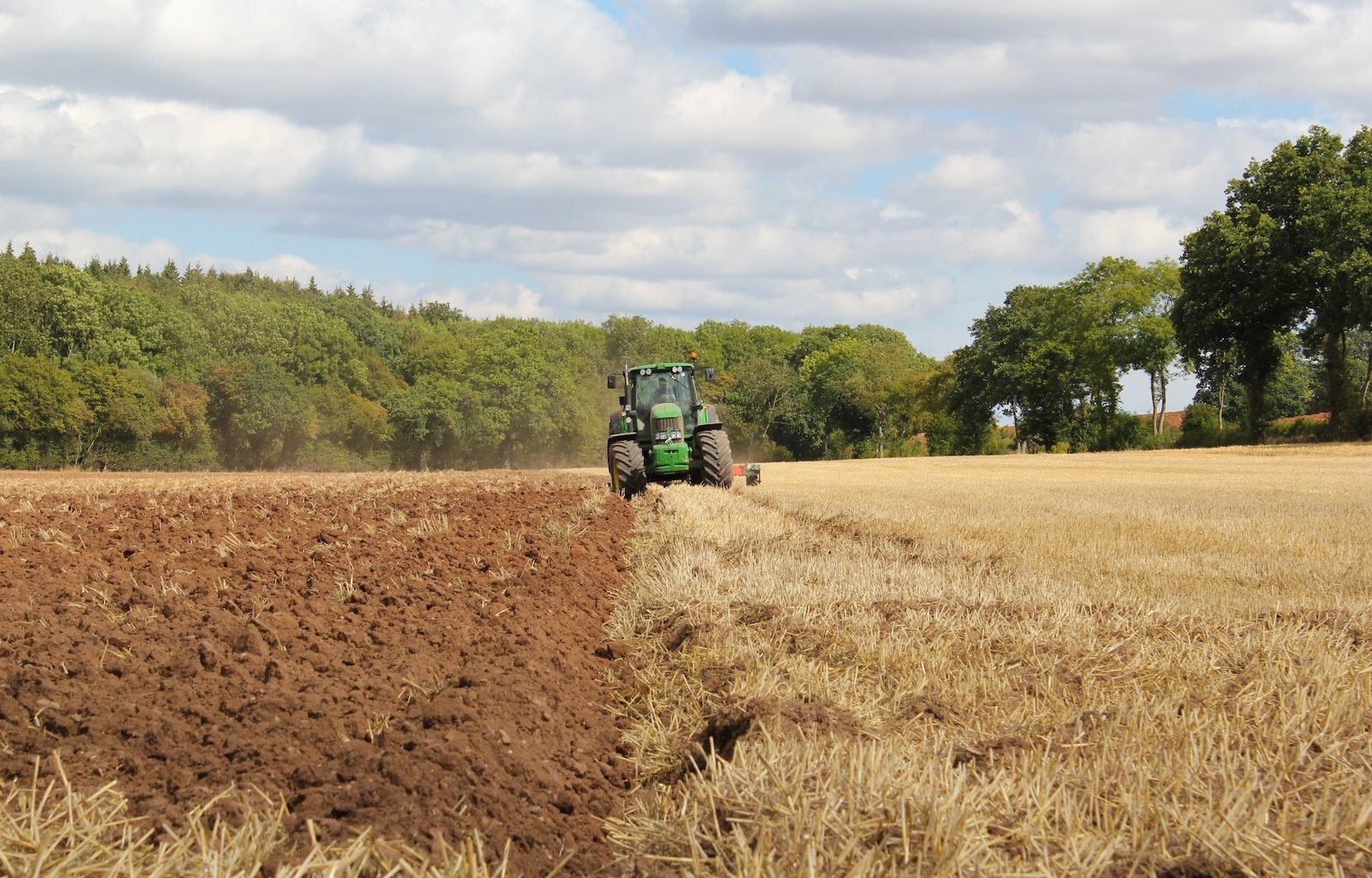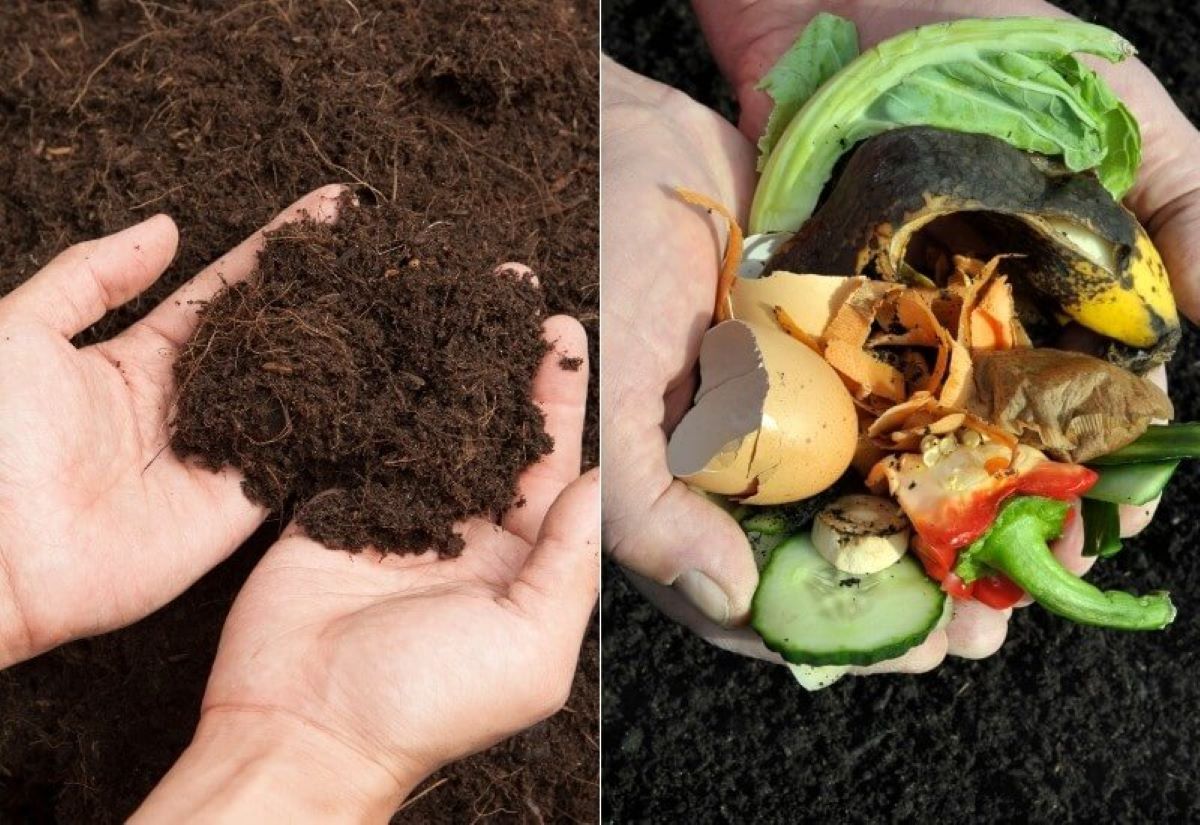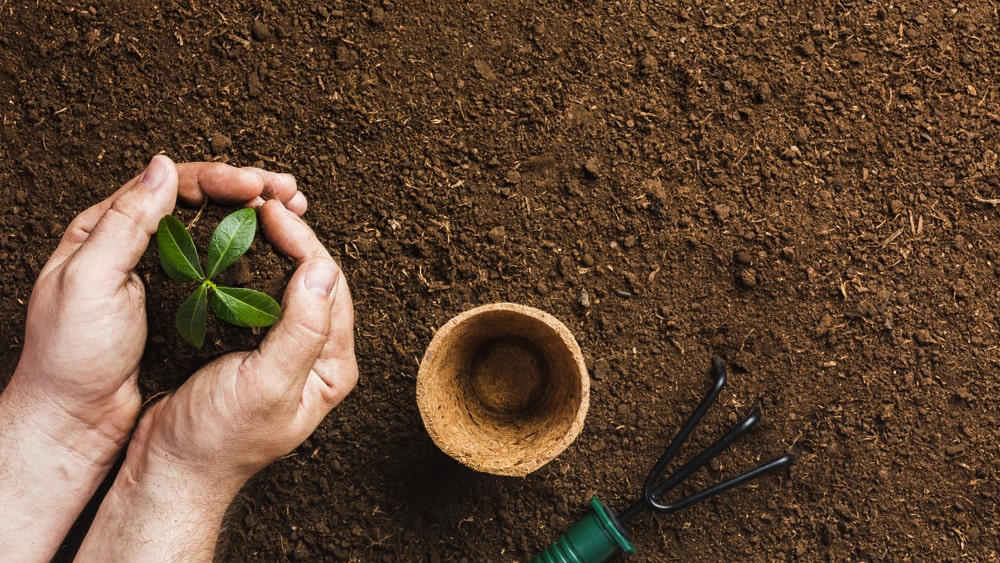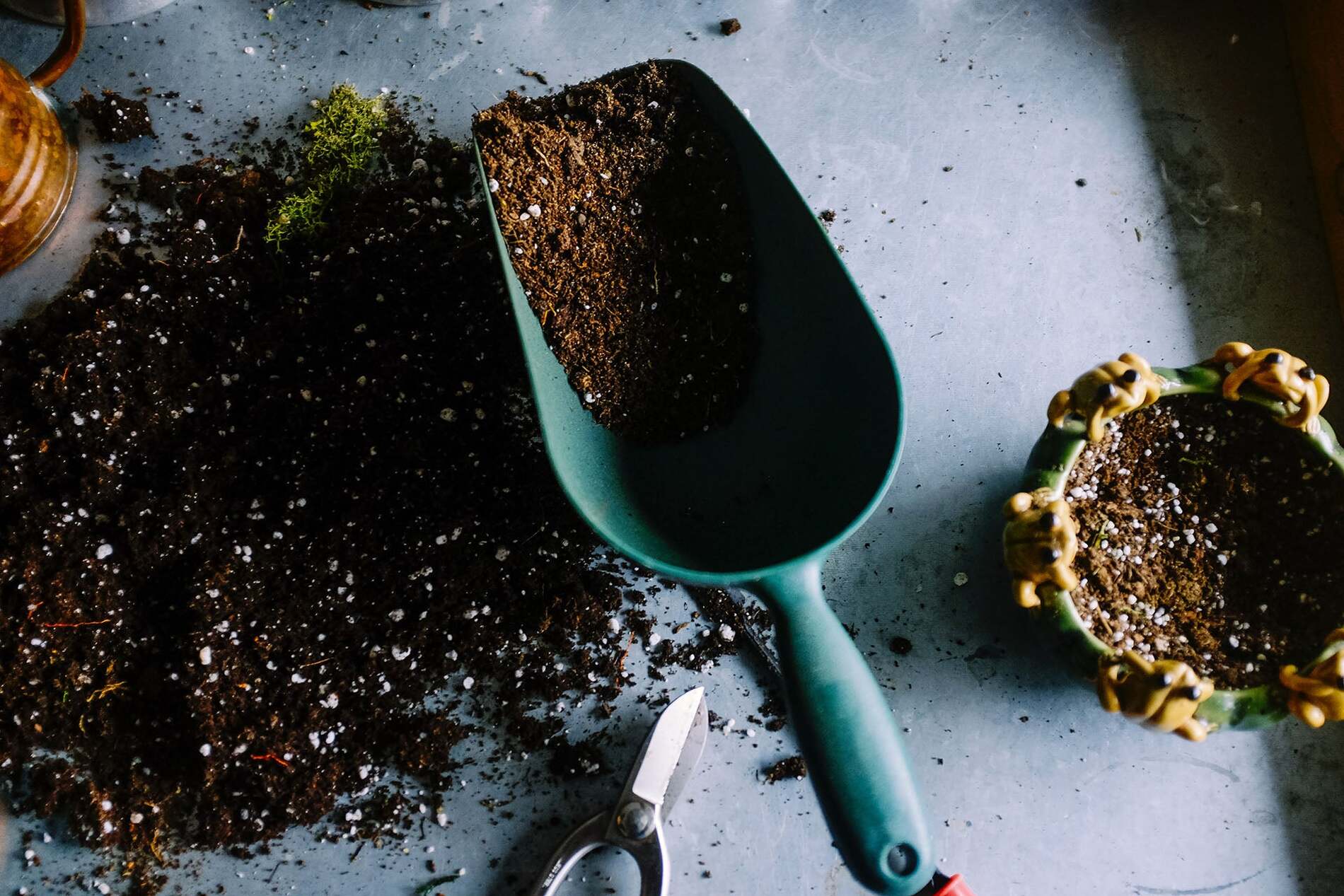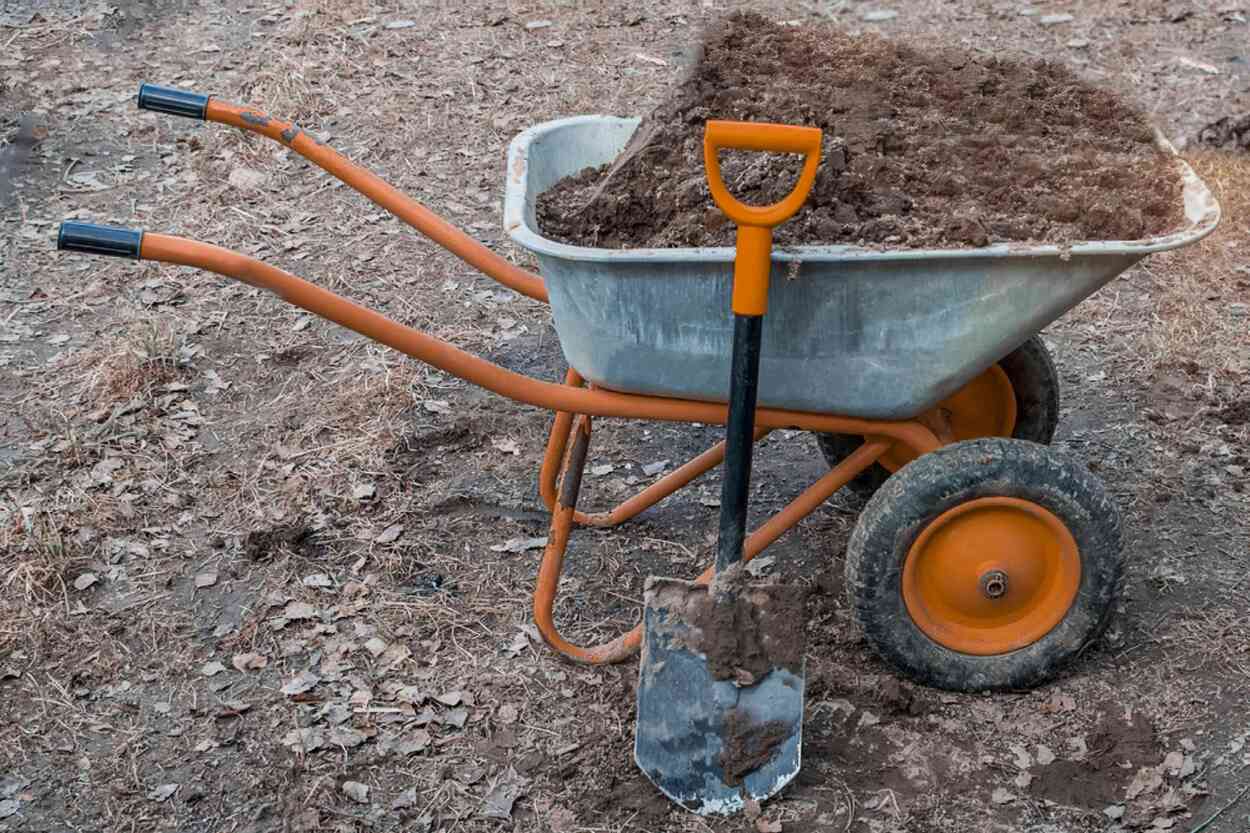Home>Types of Gardening>Edible Gardening>What Is The Difference Between Aquaponics And Hydroponics?
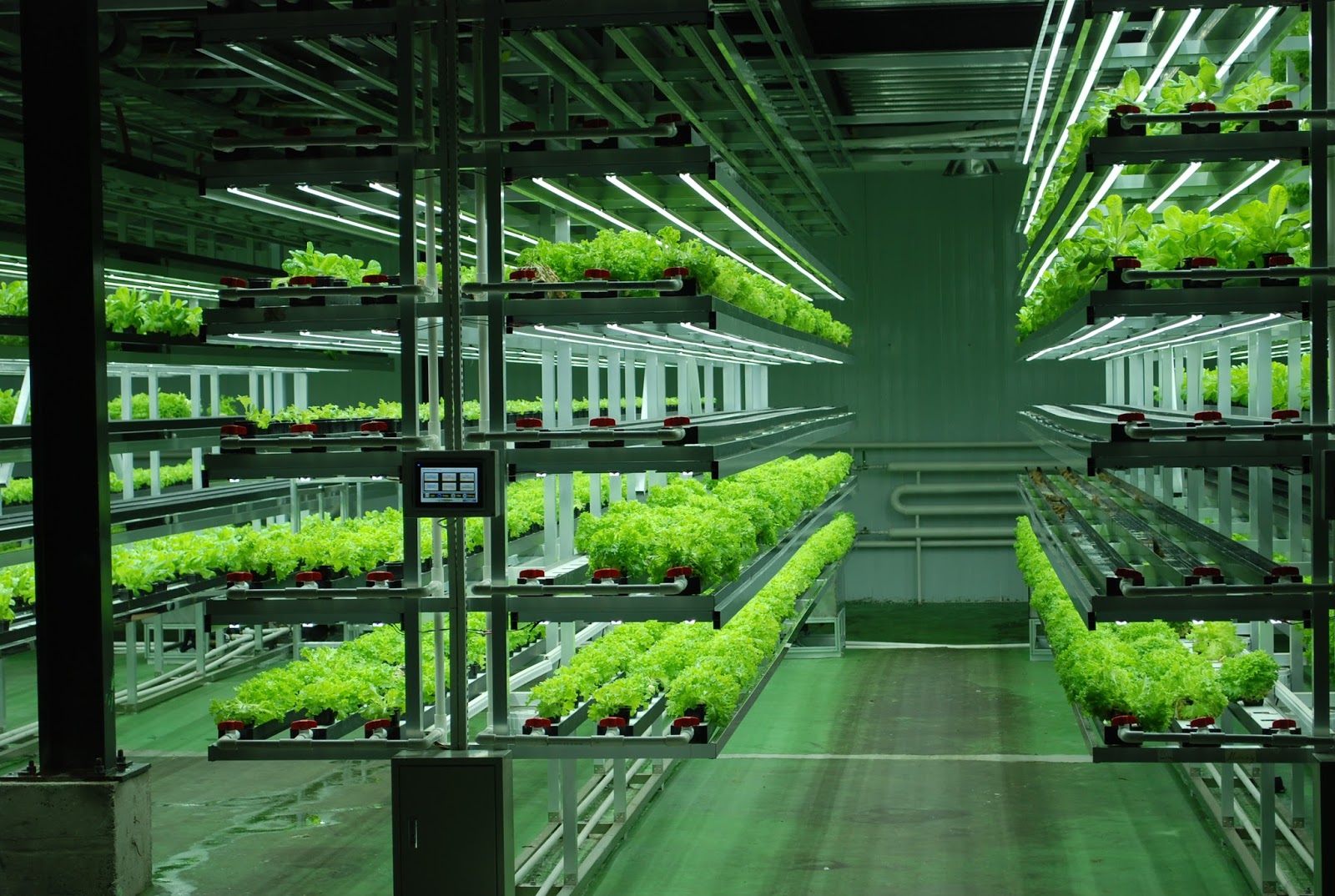

Edible Gardening
What Is The Difference Between Aquaponics And Hydroponics?
Modified: January 22, 2024
Discover the key distinctions between aquaponics and hydroponics, and learn how each method can enhance your edible gardening experience.
(Many of the links in this article redirect to a specific reviewed product. Your purchase of these products through affiliate links helps to generate commission for Chicagolandgardening.com, at no extra cost. Learn more)
Table of Contents
- Introduction
- Definition of Aquaponics
- Definition of Hydroponics
- Key Similarities between Aquaponics and Hydroponics
- Key Differences between Aquaponics and Hydroponics
- Nutrient Source in Aquaponics
- Nutrient Source in Hydroponics
- Water Management in Aquaponics
- Water Management in Hydroponics
- Plant Growth and Health in Aquaponics
- Plant Growth and Health in Hydroponics
- Maintenance and Effort in Aquaponics
- Maintenance and Effort in Hydroponics
- Cost Comparison between Aquaponics and Hydroponics
- Conclusion
Introduction
Edible gardening has gained tremendous popularity in recent years as people become more conscious of where their food comes from and the impact it has on their health and the environment. Two popular methods of growing food in a controlled environment are aquaponics and hydroponics. While these two systems share similarities, there are fundamental differences that set them apart.
Aquaponics and hydroponics are both soilless gardening techniques that allow for the cultivation of plants without the use of traditional soil. Instead, they utilize water-based systems to provide plants with the necessary nutrients for growth. By eliminating the need for soil, these methods offer numerous advantages, including increased crop yield, faster growth rates, and reduced water consumption.
Many people often confuse aquaponics with hydroponics, but it’s important to understand that these methods differ in terms of nutrient source, water management, and overall maintenance. In this article, we will delve into the details of aquaponics and hydroponics, highlighting their similarities and differences to help you determine which system is best suited for your edible gardening needs.
Definition of Aquaponics
Aquaponics is a sustainable farming technique that combines aquaculture (the raising of fish) with hydroponics (the cultivation of plants in water). It is a closed-loop system where fish and plants mutually benefit each other. The waste produced by the fish is broken down by beneficial bacteria and converted into nutrients for the plants. These nutrients are then absorbed by the plants, effectively filtering the water and providing a clean and nutrient-rich environment for the fish.
The heart of an aquaponics system is the symbiotic relationship between the fish and the plants. As the fish produce waste, mainly in the form of ammonia, it is harmful to them if it is allowed to accumulate. However, this waste becomes an essential nutrient for the plants. The plants take up the ammonia and convert it into nitrites and nitrates, which are essential macronutrients for their growth. In the process, the water is purified, creating a sustainable and eco-friendly way to grow both fish and plants.
Aquaponics offers several advantages. Firstly, it maximizes the use of resources by creating a closed-loop system where waste is recycled and used efficiently. Secondly, it eliminates the need for chemical fertilizers, as the waste from the fish provides the necessary nutrients for the plants. This makes aquaponics an organic and sustainable method of agriculture. Finally, water usage is significantly reduced compared to traditional soil-based farming, as water is recirculated within the system instead of being lost through evaporation and runoff.
The types of fish that can be raised in an aquaponics system vary, depending on the size and environmental conditions. Common fish species used include tilapia, trout, catfish, and perch. The choice of fish should consider factors such as temperature tolerance, growth rate, and compatibility with the plant species being cultivated.
Definition of Hydroponics
Hydroponics is a method of growing plants in a soilless medium, where the roots are held in a nutrient-rich water solution. In hydroponic systems, plants receive all their required nutrients directly through the water rather than extracting them from soil. This controlled environment enables plants to grow faster and produce higher yields compared to traditional soil-based cultivation.
In hydroponics, plants are typically grown in containers or trays filled with an inert medium like perlite, vermiculite, coco coir, or rockwool. The inert medium provides support for the plant roots while allowing for adequate oxygenation and water drainage. The roots are continuously bathed in a nutrient solution, ensuring that they receive the necessary elements required for growth in optimal proportions.
The nutrient solution used in hydroponics is carefully formulated to meet the specific needs of the plants being grown. It typically contains a mix of essential macronutrients (such as nitrogen, phosphorus, and potassium) and micronutrients (such as iron, zinc, and manganese). By providing these nutrients directly to the roots, plants can allocate more energy towards growth and development, resulting in healthier and more productive crops.
Hydroponics offers several advantages over traditional soil-based gardening. Firstly, it allows for precise control over the growing conditions, such as pH levels, nutrient concentrations, and water availability. This level of control enables growers to optimize plant growth and tailor the environment to the specific needs of each crop. Secondly, hydroponics minimizes the risk of soil-borne diseases and pests, reducing the need for chemical pesticides. Finally, since hydroponic systems typically use recirculating water, they are more water-efficient than traditional farming methods, making them a sustainable choice.
There are numerous types of hydroponic systems, including nutrient film technique (NFT), deep water culture (DWC), drip irrigation, and aeroponics. Each system has its own advantages and considerations, depending on factors such as available space, budget, and desired crop selection. While hydroponics does not incorporate fish as in aquaponics, it remains a viable and popular choice for those looking to maximize crop yields in a controlled and efficient manner.
Key Similarities between Aquaponics and Hydroponics
Aquaponics and hydroponics, despite their differences, share several key similarities in their approach to soilless gardening. These similarities include:
- Soilless Cultivation: Both aquaponics and hydroponics eliminate the need for traditional soil and instead rely on water-based systems to deliver nutrients directly to the plants.
- Increased Yields: Both systems have the potential to produce higher crop yields compared to traditional soil-based gardening methods. The controlled environments and optimized nutrient delivery systems allow for faster and more efficient plant growth.
- Water Conservation: Aquaponics and hydroponics are both water-efficient methods of cultivation. By using recirculating water systems, they minimize water waste and optimize resource usage.
- Reduced Dependency on Chemicals: In both aquaponics and hydroponics, the need for chemical fertilizers is greatly reduced or eliminated altogether. The controlled nutrient systems provide plants with the necessary elements for growth, reducing reliance on synthetic fertilizers.
- Flexibility and Scalability: Both aquaponics and hydroponics can be implemented in a variety of settings, ranging from small-scale home gardens to large commercial operations. They offer flexibility in terms of the types of crops that can be grown and allow for year-round cultivation.
These similarities make aquaponics and hydroponics attractive options for those looking to explore sustainable and efficient methods of growing their own food. Whether you choose to incorporate fish into your system or focus solely on plant cultivation, both systems offer unique advantages and the opportunity to practice environmentally friendly agriculture.
Key Differences between Aquaponics and Hydroponics
While aquaponics and hydroponics share similarities, there are several key differences that set them apart from each other. These differences encompass the nutrient source, water management, plant growth and health, as well as maintenance and effort required. Understanding these distinctions can help you determine which system is best suited for your specific needs.
- Nutrient Source: In aquaponics, fish waste serves as the primary source of nutrients for the plants. The waste is broken down by beneficial bacteria into forms that the plants can absorb. In hydroponics, on the other hand, the nutrient solution is carefully formulated and directly provided to the plants.
- Water Management: Aquaponics relies on the continuous circulation of water between the fish tank and the grow beds. The fish waste provides the nutrients for the plants, and the plants filter the water for the fish. Hydroponics, on the other hand, typically uses a recirculating system or a flow-to-waste system, where excess nutrient solution is drained and replenished.
- Plant Growth and Health: Aquaponics promotes a holistic approach where the health of the fish and plants is directly interconnected. The fish provide additional nutrients and organic matter that contribute to the overall soil fertility and plant health. In hydroponics, plants receive a precisely controlled nutrient solution, allowing for optimized growth and development.
- Maintenance and Effort: Aquaponic systems require regular monitoring of water quality parameters, such as pH, ammonia, nitrite, and nitrate levels, to ensure the well-being of both the fish and plants. Additionally, fish care and management are an essential aspect of aquaponics. Hydroponics, while still requiring monitoring and adjustment of nutrient levels, does not involve the same level of fish care and maintenance.
- Cost Comparison: Aquaponics systems generally require higher upfront costs due to the inclusion of fish tanks, filtration systems, and additional equipment for maintaining a suitable fish habitat. Hydroponics systems, on the other hand, tend to have lower upfront costs as they mainly focus on delivering a carefully balanced nutrient solution to the plants.
These key differences should be carefully considered when deciding between aquaponics and hydroponics. The choice ultimately depends on various factors, including your goals, resources, and level of commitment. Whether you prioritize the integration of sustainable fish farming or the precise control over plant nutrients, both systems offer unique advantages that can elevate your edible gardening experience.
Nutrient Source in Aquaponics
In aquaponics, the primary nutrient source for the plants is derived from the waste produced by the fish. This waste, which mainly consists of ammonia, serves as a valuable resource that is converted into usable nutrients for plant growth. The breakdown of ammonia occurs through the process of nitrification, facilitated by beneficial bacteria.
Ammonia, excreted by the fish through their gills and waste, is toxic to them in high concentrations. However, when ammonia is present in the water, beneficial bacteria called nitrifying bacteria colonize various surfaces within the aquaponic system. These bacteria convert the toxic ammonia into nitrites (NO2-) and then further oxidize the nitrites into nitrates (NO3-).
The nitrates produced through this process serve as a vital source of nitrogen for the plants. As the water circulates through the grow beds or other growing mediums, these nitrates are absorbed by the plant roots. This nutrient-rich water supports plant growth and provides an efficient means of nutrient delivery.
By incorporating fish waste into the nutrient cycle, aquaponics creates a symbiotic relationship between the fish and plants. The fish waste provides essential nutrients for the plants, and in turn, the plants act as a natural filtration system, removing the nitrates from the water. This cycle creates a sustainable and self-sufficient ecosystem where both aquatic life and plants thrive.
It’s important to note that while aquaponics relies on fish waste for nutrient supply, additional input may still be required to maintain a balanced nutrient profile, especially for specific plant species with high nutrient demands. This can be achieved by supplemental feeding or the use of mineral supplements when necessary to ensure optimal plant growth.
Common fish species used in aquaponics include tilapia, trout, catfish, and perch, although the choice ultimately depends on factors such as local climate, water temperature, and regional regulations. Selecting fish species that are compatible with the target plants and environmental conditions is crucial to maintaining a healthy and thriving aquaponic system.
Nutrient Source in Hydroponics
In hydroponics, the nutrient source for plant growth is a carefully formulated solution that provides all the necessary elements for optimal development. Unlike aquaponics, hydroponics does not rely on fish waste or natural decomposition for nutrient supply. Instead, growers have direct control over the nutrient composition, ensuring that plants receive the exact balance of macro and micronutrients they require.
The nutrient solution used in hydroponics contains a precise blend of essential macronutrients like nitrogen (N), phosphorus (P), and potassium (K), as well as essential micronutrients such as iron (Fe), zinc (Zn), and manganese (Mn), among others. These nutrients are dissolved in water and delivered directly to the plant roots.
Hydroponic nutrient solutions can be either pre-mixed commercial formulations or custom-made blends, depending on the specific needs of the plants being grown. The optimal nutrient concentration varies based on the stage of plant growth and the crop variety, and growers adjust the solution accordingly to ensure plants receive the appropriate nutrients at each growth stage.
The nutrient solution is typically stored in a reservoir, and depending on the hydroponic system design, it may be recirculated to minimize waste or replenished as needed. Growers must carefully monitor the pH balance of the solution to ensure optimal nutrient uptake by the plants. pH levels that are too high or too low can hinder nutrient absorption and impact plant health.
One advantage of hydroponics is the ability to tailor the nutrient solution precisely to the needs of the crop being cultivated. This fine-tuned control allows plants to access nutrients more efficiently, resulting in faster growth rates and increased crop yields compared to traditional soil-based gardening.
It’s important to note that while hydroponics provides a controlled and optimized nutrient supply, regular monitoring and adjustment of the nutrient solution are necessary to avoid imbalances or deficiencies. Growers must ensure that the nutrient solution is replenished as plants uptake the nutrients, maintaining a consistent nutrient profile to support healthy plant growth.
Additionally, it is crucial to periodically flush and replace the nutrient solution to prevent salt buildup, which can negatively affect plant health. This maintenance step helps maintain the nutrient balance and prevent the accumulation of excess salts that can hinder nutrient uptake.
Overall, hydroponics’ reliance on a carefully formulated nutrient solution offers growers unparalleled control over plant nutrition, leading to higher yields and healthier crops when managed effectively.
Water Management in Aquaponics
Water management is a critical aspect of aquaponics as it ensures the well-being of both the fish and the plants. In an aquaponic system, water is continuously circulated between the fish tank and the grow beds, creating a symbiotic relationship that supports the growth of both aquatic life and plants.
The water in an aquaponic system serves multiple purposes. Firstly, it acts as a habitat for the fish, providing them with an environment where they can thrive. Secondly, the water contains fish waste, which serves as a nutrient source for the plants. Lastly, the water delivers these nutrients to the plant roots and provides the necessary hydration for plant growth.
Efficient filtration is a crucial component of aquaponics to maintain water quality. The system typically includes a mechanical filter to remove solid waste and debris. Additionally, a biological filter is employed to provide a habitat for beneficial bacteria that convert fish waste into plant-usable nutrients.
Aquaponics systems typically rely on a flood and drain mechanism or a constant flow system to manage water movement. In flood and drain systems, water periodically floods the grow beds where the plants are located. The water then drains back into the fish tank, carrying the nutrients from the fish waste. This cycle ensures that the plants receive sufficient nutrients and oxygen while also preventing the water from becoming stagnant.
It’s important to maintain appropriate water levels within the system to ensure the well-being of the fish and optimize plant growth. Regular monitoring of water parameters, including temperature, pH levels, and ammonia, nitrite, and nitrate levels, is crucial to maintaining a balanced and supportive environment for both fish and plants.
Water quality in aquaponics systems is vital, as any imbalances or nutrient deficiencies can impact fish health and plant growth. Maintaining proper water chemistry and quality requires vigilant monitoring and adjustment when necessary. This includes testing and adjusting pH levels, ensuring optimal oxygenation, and addressing any nutrient imbalances.
Water conservation is another important aspect of aquaponics. Since the system recirculates water, minimizing water waste is a key consideration. Regular checks for leaks or system malfunctions, as well as proper system design and maintenance, play a vital role in ensuring water efficiency.
In summary, water management is a critical element in aquaponics. It involves maintaining water quality, managing nutrient delivery, and ensuring proper oxygenation. By carefully managing the water in an aquaponic system, growers can create an ideal environment in which both fish and plants can thrive and mutually benefit from the symbiotic relationship.
Water Management in Hydroponics
Water management is a key aspect of hydroponics as it is crucial for providing plants with the necessary hydration and nutrients. In a hydroponic system, water serves as the primary delivery mechanism for nutrients, replacing traditional soil as the medium for plant growth.
Hydroponic systems employ various methods for water management, depending on the specific system design and the needs of the plants being cultivated. The aim is to ensure that the plants have access to a constant supply of water and nutrients while preventing waterlogging or nutrient imbalances.
One common water management technique in hydroponics is the recirculation system. In this system, water is continuously pumped through the growing medium or channels, delivering nutrients to the plant roots. Excess water is collected and recirculated back into the reservoir to avoid waste.
Another approach is the drip irrigation system, where water is delivered directly to the base of each plant through individual drip emitters. This method conserves water by effectively targeting each plant’s root zone, minimizing evaporation and runoff.
Water quality in hydroponics is crucial, as any impurities or imbalances can impact plant health and growth. Monitoring key water parameters such as pH levels, electrical conductivity (EC), and nutrient concentrations is essential for maintaining a proper nutrient solution. Adjustments may be necessary to ensure that the nutrient solution remains within the required range for optimal plant nutrition.
Maintaining proper oxygenation of the water is also vital in hydroponics to promote healthy root development. Oxygen is often supplied to the root zone through the use of air stones or diffusers in the nutrient solution reservoir. This helps to ensure that plants receive sufficient oxygen, which is essential for nutrient uptake and overall plant vitality.
Water conservation is another consideration in hydroponics. While hydroponic systems generally use less water compared to traditional soil-based gardening, it is still important to minimize water waste. Proper system design, such as eliminating leaks and optimizing water distribution, can help reduce water usage. Additionally, implementing water recycling systems or capturing and reusing overflow water can contribute to sustainable water management.
In summary, water management in hydroponics involves ensuring a constant supply of water and nutrients to the plants while maintaining proper water quality and oxygenation. By carefully monitoring and controlling these factors, growers can optimize plant growth, minimize water waste, and create a sustainable and efficient hydroponic system.
Plant Growth and Health in Aquaponics
Plant growth and health in aquaponics are closely tied to the unique nutrient-rich environment created by the symbiotic relationship between fish and plants. The integration of fish waste as a nutrient source results in several benefits that contribute to robust plant growth and overall plant health.
One key advantage of aquaponics is the abundance and accessibility of nutrient-rich water. As the fish waste breaks down, it is converted into nitrates, which serve as essential macronutrients for plant growth. The continuous flow of nutrient-rich water to the plant roots ensures that they receive a constant supply of necessary nutrients. This consistent nutrient availability often leads to faster growth rates and higher yields compared to traditional soil-based gardening.
The controlled environment of an aquaponic system also promotes optimal plant health. The water constantly circulating through the system helps maintain a stable temperature and oxygen supply to the roots. This combination of reliable nutrient delivery, ideal temperature regulation, and proper oxygenation creates an environment where plants can thrive.
Aquaponics offers advantages in terms of disease and pest management. Unlike traditional soil-based gardening, aquaponic systems are less susceptible to soil-borne diseases and pests. The absence of soil eliminates many common pathogens and pests that can harm plants. Additionally, the continuous movement of water in the system discourages the buildup of stagnant water, further reducing the risk of disease and pests.
The natural filtration provided by the plants in an aquaponic system contributes to maintaining water quality. As plants absorb excess nutrients, particularly nitrates, they act as a biofilter, improving the overall water quality and reducing the likelihood of nutrient imbalances. This filtration process helps create a stable and supportive environment for both fish and plants.
However, it’s important to note that maintaining plant health in aquaponics requires careful monitoring and management. Regular observation of plant appearance, growth patterns, and overall health is crucial to catch any signs of nutrient deficiencies, imbalances, or other stress factors. Adjustments to nutrient levels, pH, or water flow may be necessary to optimize plant health and address any issues that arise.
Overall, plant growth and health in aquaponics benefit from the nutrient-rich water, stable temperature, and reduced disease and pest pressure. The symbiotic relationship between fish and plants provides an efficient and organic approach to cultivation that can lead to vibrant, productive, and healthy plants.
Plant Growth and Health in Hydroponics
Plant growth and health in hydroponics are optimized through the precise control and delivery of nutrients, water, and environmental factors. The soilless nature of hydroponics eliminates many of the challenges associated with traditional soil-based gardening, allowing for enhanced plant growth and overall health.
One of the key advantages of hydroponics is the ability to deliver nutrients directly to the plant roots in a well-balanced and controlled manner. In hydroponic systems, the nutrient solution is carefully formulated to provide optimal levels of macronutrients and micronutrients required for plant growth. This precise nutrient delivery enables plants to access nutrients more efficiently, resulting in faster growth rates and increased yields.
Moreover, the controlled environment in hydroponics allows for fine-tuned management of various factors affecting plant growth. Growers have the ability to control temperature, humidity, light exposure, and pH levels, among other parameters. These optimal growing conditions contribute to healthier plants with reduced stress factors, leading to enhanced growth and development.
Another advantage of hydroponics is the improved oxygen availability to the plant roots. In traditional soil-based systems, air pockets can be limited, hindering oxygen diffusion. In hydroponics, the roots are exposed to oxygen-rich water or air, promoting vigorous root growth and nutrient uptake.
Hydroponics also offers advantages in terms of disease prevention and pest management. Without the presence of soil, many soil-borne pathogens and pests are eliminated, reducing the risk of plant diseases. Additionally, the controlled environment and absence of organic matter make hydroponic systems less attractive to pests.
Water conservation is another benefit of hydroponics. The recirculating systems commonly used in hydroponics help minimize water usage by reusing and recycling the nutrient solution. This efficient use of water makes hydroponics a sustainable option, particularly in areas with limited water resources.
However, it’s important to note that maintaining plant health in hydroponics requires active monitoring and adjustment. Regular measurement of pH and electrical conductivity (EC) is essential to ensure that the nutrient solution remains within the optimal range for plant uptake. Additionally, periodic monitoring for nutrient imbalances, deficiencies, or toxicities is crucial for addressing any issues promptly.
Overall, hydroponics provides an ideal environment for plant growth, with precise control over nutrients, water, and environmental conditions. By optimizing these factors, hydroponic systems can produce healthy, vibrant plants with rapid growth and increased crop yields.
Maintenance and Effort in Aquaponics
Maintenance and effort in aquaponics are essential for ensuring the proper functioning and success of the system. While aquaponics is a self-sustaining method of cultivation, it still requires regular monitoring and management to maintain the well-being of both the fish and the plants.
One key aspect of maintenance in aquaponics is water quality management. Regular testing and monitoring of water parameters, such as pH levels, ammonia, nitrite, and nitrate levels, are necessary to ensure a healthy environment for the fish and optimal nutrient availability for the plants. Adjustments to pH, nutrient levels, or water flow may be required to maintain a balanced and supportive system.
Fish care is an important component of aquaponics maintenance. This involves monitoring fish health, feeding them an appropriate diet, and ensuring proper water conditions for their well-being. Regular observation for signs of stress, disease, or abnormalities, and addressing any issues promptly is essential to safeguard the fish population.
The grow beds or other growing mediums in aquaponics require regular maintenance as well. This includes removing any dead plant material, pruning plants as needed, and occasionally cleaning the growing medium to prevent clogging and ensure proper root development.
Another aspect of maintenance in aquaponics is pest and disease management. While aquaponics systems are generally less susceptible to soil-borne diseases and pests, it’s important to remain vigilant. Regular inspection of plants for signs of pests or disease, and taking appropriate measures such as biological pest control or organic treatments if necessary, is crucial for ensuring plant health.
Effort is required to monitor the overall performance of the aquaponic system. This includes observing the growth patterns of the plants, assessing the health and behavior of the fish, and noting any changes in system functioning. Identifying and addressing issues promptly ensures the system operates optimally and maximizes plant growth and fish production.
Education and ongoing learning are also important in aquaponics. As with any specialized growing method, staying informed about best practices, new techniques, and advancements in aquaponics contributes to long-term success. This might involve attending workshops, joining online communities, or accessing resources to stay updated on the latest developments in aquaponics.
While aquaponics requires regular maintenance and effort, many aquaponic enthusiasts appreciate the hands-on nature of the system. The rewarding experience of growing your own food and witnessing the symbiotic relationship between fish and plants makes the maintenance and effort worthwhile. With proper care and attention, aquaponic systems can provide a sustainable and productive way to garden.
Maintenance and Effort in Hydroponics
Maintenance and effort are essential components of successful hydroponic systems. Although hydroponics offers advantages such as efficient nutrient delivery and controlled environments, it requires regular monitoring and management to ensure optimal plant growth and overall system performance.
Water quality management is critical in hydroponics. Regular testing and adjustment of pH levels and nutrient concentrations are necessary to maintain the proper nutrient balance for plant uptake. Monitoring electrical conductivity (EC) is also important to ensure the appropriate concentration of dissolved salts in the nutrient solution.
In hydroponics, maintaining a clean and well-functioning system is crucial. This involves regular inspection and cleaning of the components, including the reservoir, tubing, pumps, and filters, to prevent clogging, algae growth, or microbial buildup. Proper sanitation practices help mitigate the risk of disease or pests that can impact plant health.
Monitor plant health is necessary in hydroponics. Regular visual inspections for signs of nutrient deficiencies, disease, or pest infestations are crucial for early detection and rapid response. Prompt action in addressing any issues can help prevent the spread of problems throughout the entire system.
Nutrient solution management is an ongoing task in hydroponics. Regular monitoring of nutrient levels and replenishment or adjustment as needed ensure that plants have access to the essential macronutrients and micronutrients required for healthy growth. It’s important to follow recommended nutrient schedules and guidelines specific to the plant species being cultivated.
Effort is also required to maintain proper environmental conditions in hydroponics. This includes monitoring temperature, humidity, and light intensity to create an optimal growing environment for the plants. Adjustments may be necessary to achieve the ideal conditions for different growth stages or different plant varieties.
Regular maintenance of the growing medium is necessary in certain hydroponic systems. Depending on the system design, periodic replacement or washing of the growing medium may be required to prevent nutrient imbalances, root compaction, or salt buildup. Proper root zone aeration and oxygenation are vital for root health and nutrient absorption.
Effort is also directed towards pest and disease prevention in hydroponics. By implementing strict hygiene practices, such as quarantine measures for new plants, maintaining a clean growing environment, and using biological pest control methods, growers can minimize the risk of infestations from pests or diseases.
Continuous education and staying up-to-date with the latest hydroponic techniques and research is important for optimizing performance and staying informed about advancements in the field. This can involve attending workshops, conferences, or online forums, as well as seeking out reputable sources of information related to hydroponics.
While hydroponics requires regular maintenance and effort, the ability to precisely control growing conditions and the potential for increased yields make it a rewarding endeavor. With the right attention to detail, hydroponic systems can provide a highly efficient and productive method of growing plants.
Cost Comparison between Aquaponics and Hydroponics
When considering aquaponics and hydroponics, it’s important to evaluate the cost implications of each system. While the upfront costs and ongoing expenses vary depending on several factors, understanding the potential expenses can help growers make informed decisions.
Aquaponics systems generally require higher upfront costs compared to hydroponics. This is primarily due to the inclusion of fish tanks, filtration systems, and additional equipment necessary to maintain a suitable fish habitat. The cost of setting up an aquaponics system also depends on the scale and complexity of the system. Larger systems or more advanced designs may incur higher expenses.
Hydroponic systems, on the other hand, tend to have lower upfront costs compared to aquaponics. The primary expenses include the cost of a growth system or infrastructure, growing mediums, nutrient solution, pumps, and lighting. Hydroponic systems offer more simplicity in design, which can contribute to lower initial costs, especially when starting with a smaller setup.
In terms of ongoing expenses, aquaponics systems typically have higher operational costs compared to hydroponics. Aquaponics requires a continuous supply of fish feed, occasional replacement of fish, and regular monitoring of water parameters. The cost of fish feed depends on the type and quality of feed used, as well as the number and size of fish in the system.
Hydroponics systems, while generally having lower ongoing costs, do have expenses associated with nutrient solution replenishment and electricity costs. The cost of nutrients depends on the type and brand used, as well as the size of the system and the types of crops being grown. Electricity costs vary depending on factors such as lighting, pumps, and environmental controls.
It’s worth noting that both aquaponics and hydroponics offer potential for cost savings in other areas. These systems typically use less water compared to traditional soil-based gardening, leading to reduced water expenses. Additionally, the controlled environments in aquaponics and hydroponics can help minimize the need for chemical pesticides and fertilizers, potentially reducing the associated costs.
The cost-effectiveness of aquaponics and hydroponics also depends on factors such as the types of crops being grown, the desired scale of production, local market conditions, and personal goals and preferences. Conducting a thorough analysis, including a detailed cost-benefit analysis and considering long-term sustainability and profitability, is crucial when evaluating the economic feasibility of each system.
Ultimately, while both aquaponics and hydroponics may require initial investments and ongoing expenses, they offer the potential for significant long-term benefits and returns. It is important to carefully assess your specific needs, resources, and goals to determine the most cost-effective solution for your unique circumstances.
Conclusion
Aquaponics and hydroponics are two soilless gardening techniques that offer unique advantages for growing plants in a controlled and efficient manner. While they share some similarities, such as increased yields, water conservation, and reduced dependency on chemical fertilizers, they also have key differences in terms of nutrient source, water management, and overall maintenance.
In aquaponics, fish waste serves as the primary source of nutrients for the plants, creating a symbiotic relationship between the fish and vegetation. The water continuously circulates between the fish tank and the grow beds, providing a nutrient-rich environment for both aquatic life and plants.
Hydroponics, on the other hand, relies on a carefully formulated nutrient solution to deliver the necessary nutrients directly to the plant roots. This method allows for precise control over plant nutrition and typically requires less maintenance and monitoring compared to aquaponics.
Both aquaponics and hydroponics offer advantages such as faster plant growth, higher crop yields, and reduced water consumption compared to traditional soil-based gardening. They provide solutions for growing food in urban settings, arid environments, and areas with limited space or poor soil quality.
When considering which method to choose, several factors should be taken into account, including cost, technical expertise, resource availability, and personal preferences. Aquaponics may appeal to those interested in sustainable fish farming and a more natural ecosystem approach, while hydroponics offers precise control over plant nutrition and simplified maintenance.
Regardless of the method chosen, both aquaponics and hydroponics have the potential to revolutionize food production by increasing yields, conserving resources, minimizing environmental impact, and providing fresh, healthy produce.
Whether you decide to explore the symbiotic relationship of aquaponics or the controlled precision of hydroponics, the journey into soilless edible gardening holds immense promise for those seeking creative and sustainable ways to cultivate their own food.
